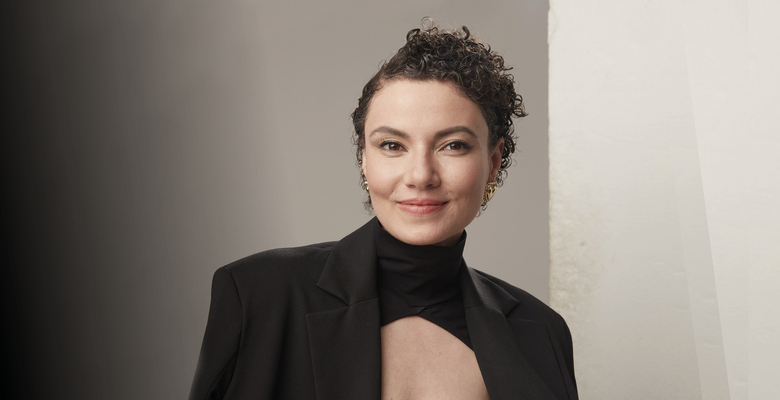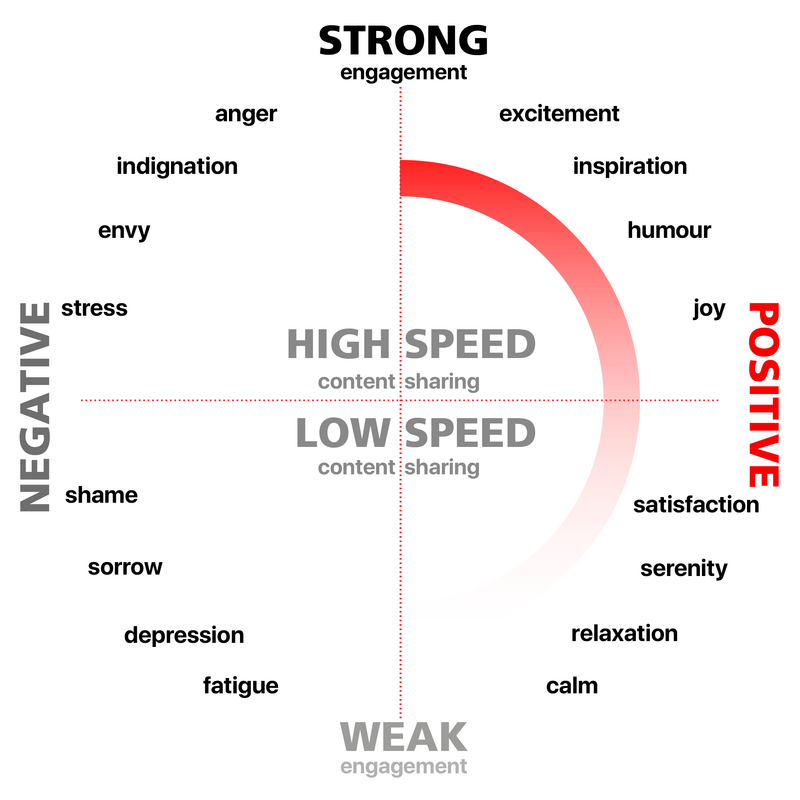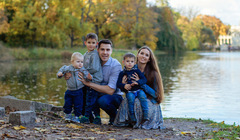
On the expanses of the internet, it’s easy to find an abundance of virtual content to help you express your feelings about an event, or illustrate a specific situation in your life. Instead of writing birthday wishes to people, many just send beautiful pictures. Quite often, the recipients get the same virtual cards from different people. Why does content become viral? How can viral content be used to promote business projects without hurting your brand? What’s the right way to promote your project? What advantages does collaboration with artificial intelligence bring? Kommersant UK heard answers to these questions in an interview with Anna Radchenko, a partner and creative director at the Radchenko & Sharipova marketing agency.
Photos from some of your projects, for example, Motherly Love and GrandMothers, have become viral. Why does some content go viral?
Virality has several elements. The first is feelings and emotions. A study by the New York Times into what material becomes viral and why includes a graph showing what emotions people felt on viewing content (such as articles, videos or photographs). It categorised the emotions into two groups depending on whether or not they encourage viewers to share the content.
For example, if the content induces enjoyment, serenity, relaxation and calm, or indeed shame, sadness, a depressed state or tiredness, then it won’t be shared. However, if people experience anger, indignation, envy or stress, or, conversely, excitement, inspiration and joy, there's a high likelihood that the content will be shared. This is because it becomes a tool for the people sharing it. It helps them to build relations and hold a dialogue with their audience. We aren’t just creating content. In essence, we’re giving people a voice. This was the effect of two of my projects; Motherly Love and GrandMothers. Not everyone can put into words their traumatic childhood experience or how they feel about the strength of a woman, but they can post a picture and this may help them to share something intimate. The second component is provocation and polarised views; your target audience may support the content while it triggers or horrifies others.

Can viral content be used to promote business projects without harming the brand?
They can be used, but to ensure that the viral content doesn’t harm the brand, it’s important to make sure that your target audience will like the provocative or ambivalent content you come up with so that they are supportive; if the content is rejected by your customers, this will become a problem. For example, Nike’s ad with a social message, What are Girls Made of? is a very emotional video which became viral. The theme of feminism is a value the Nike brand shares with its audience. Specifically, the company was the first in the world to create a kit for female football players (previously, women had played in men’s kits, just in smaller sizes). By including their values in their adverts they had an impact on their audience and strengthened the brand, whilst also using their understanding of the market and the audience to create a powerful provocation for other consumers. The Video had its greatest resonance in post-Soviet countries because the topic of feminism remains provocative in this region. In Britain, a video entitled Belvedere Vodka Presents Daniel Craig had resonance and became viral. In it, Daniel Craig, who is associated with the image of a strong and indomitable James Bond, behaves playfully and ironically and dances in a TikTok style. Several factors come into play here; breaking stereotypes, dancing trends and also the cultural code of a specific country, as humour, irony and sarcasm are very important in Britain.
Still, controversial social themes have to be exploited very carefully, as failures in this area are not a rarity. One such was Pepsi’s Kendall Jenner video: the model offers a can of fizzy drink to a policeman at a demonstration against racial inequality. Initially, the policeman behaves quite aggressively, but when Kendall holds out the can of drink to him, he softens, leading to a happy ending.

What’s the right way to promote yourself and your projects?
First of all, you need to be flexible. You mustn’t fixate on one particular method of promotion or knock on the wrong doors. I teach a lot and when I ask students about their goals, and what magazine covers, for instance, they want to see their work on, their answers are run-of-the-mill; ‘I want my work on the cover of Vogue’, they say. But when I start to ask them why Vogue in particular, or which national edition of that magazine they have in mind, they can’t explain their reasoning coherently. In reality, most people aren’t aware of the different channels for promotion which are available and so they don’t know which one would best suit their style and quirks. They are solely guided by what has the highest profile, so, essentially, they choose channels that don’t suit them. The result is disappointment, as their work is rejected. This often happens for objective reasons, as they just don’t fit the format of the channel they have chosen. This is why you need to look at your project from different angles and be able to break it down into fragments to understand which promotion channels will be relevant to the project and its author, whether they are competitions, festivals, media influencers or something else. For example, I made a film on the subject of feminism with 3D graphics and special effects. For a festival dedicated to women directors, I’m going to put together some material, including a press release and letters which accentuate the feminist aspect of the film. For a special effects competition, I’d describe the technical features, and so on.
You are constantly transforming yourself: you became a successful photographer, then you got into film directing, and now you’re a creative director. Where do you find the confidence to completely change your area of work?
My self-identity goes beyond any particular profession, it’s drawn from deeper things, which is why I’m not scared. Let’s take the different spheres I’ve been involved in; photography, directing, creativity and business. In each of these professions, I devise and realise creative ideas, establish interaction with people (working with people gives me a tremendous amount of energy) and influence them via my blog and projects. People see that I break personal and professional stereotypes and this helps them to gain the confidence they need to live the life that they want to live. I know that my path has inspired a lot of people, and I value that.
How can we become successful, accomplished professionals whose work is in high demand?
There are always two parts to success; conscious effort (actions) and luck. The more effort we put in, the smaller the importance of luck becomes. I never rely on luck, my approach is to be as proactive as possible. First of all, I consciously promote myself and my projects; I take part in podcasts, industry competitions and events, I write a blog and collaborate with people who have larger audiences than me, as well as with brands which I find interesting. Secondly, I work on uncompromising, creative and bold projects with viral potential which haven’t been made to order. As not many projects like these are made, talented people from the industry have always been ready to work with me.
What is failure for you? Have there been moments when you’ve felt like giving up?
Many times. When I did my first exhibition, I couldn’t do anything afterwards for a month. When you put your all into something (and creative people often become obsessed), then, after being on a high, you inevitably have to go down, that’s normal.

What does a creative director do? Do you use your artistic skills in your current work?
A creative director is responsible for the creation and realisation of creative solutions. Within our company, my partner, who is a brand strategist and marketer, formulates the strategy, character and values of the brand for the client and analyses their target audience. My task is to put these ideas into the language of the consumer. I transmit them through visuals and I make the voice of the brand and decide its tone, as well as using copywriting and offering specific solutions and ideas for promotion and advertising. I create these solutions and concepts for our clients and lead a team where I ensure they are implemented effectively. Of course, my background in visual art and directing, as well as my experience with major brands such as Walt Disney, Nike and Warner Music, all helps because I understand how to make creative innovations which work, promote and sell.
Recently, many platforms have appeared which allow the user to generate images using any prompt. These photos can become art. Do you use the capabilities of AI?
There have already been precedents of work created by professional photographers in collaboration with artificial intelligence getting first prize in prestigious competitions, such as the Sony World Photography Award 2023. The approach of co-authorship between a human artist and AI is provoking dialogue in society and that’s important because my answer is yes, these photos can become art. I made the transition from photography to film directing as the technical aspects of creating photos, such as lighting and editing, were not of interest to me. What fascinates me is how to make the route from an image or thought in my head to a finished project as short as possible. In my view, it’s great that, with the support of AI, this route is becoming shorter. AI can help us to quickly and effectively examine various compositions, make adjustments and choose the right option. A person must always choose, this is the beauty of human thought. The fact that people can now do everything to a higher standard and faster is impressive. But the original idea, sensibilities of taste, and an understanding of how the image can express the required thought as effectively as possible are all the prerogatives of humans.
Do you have a place in London that gives you energy, where you can find inspiration?
I like the members’ rooms at the Tate Modern and Tate Britain. I also like it in the Barbican. These places have a fantastic atmosphere.






